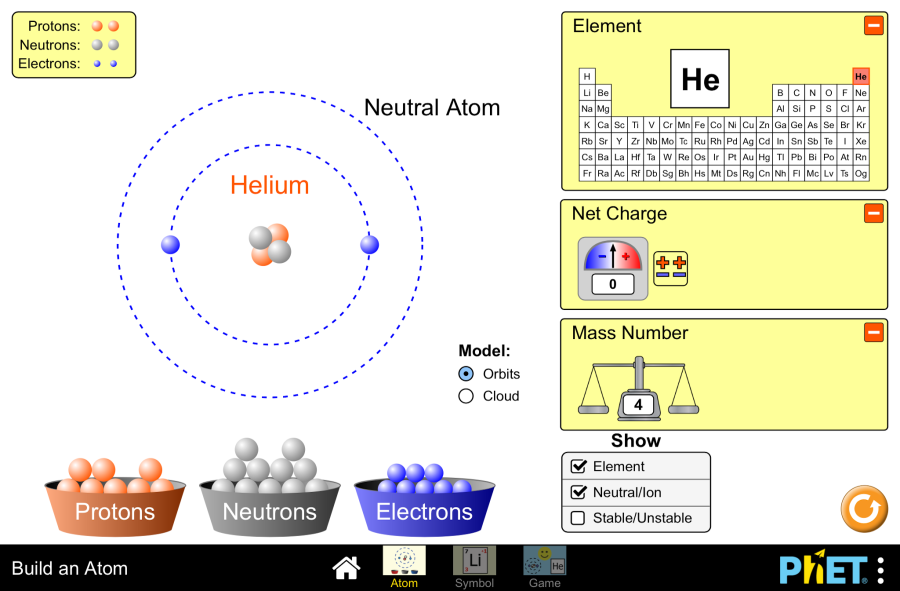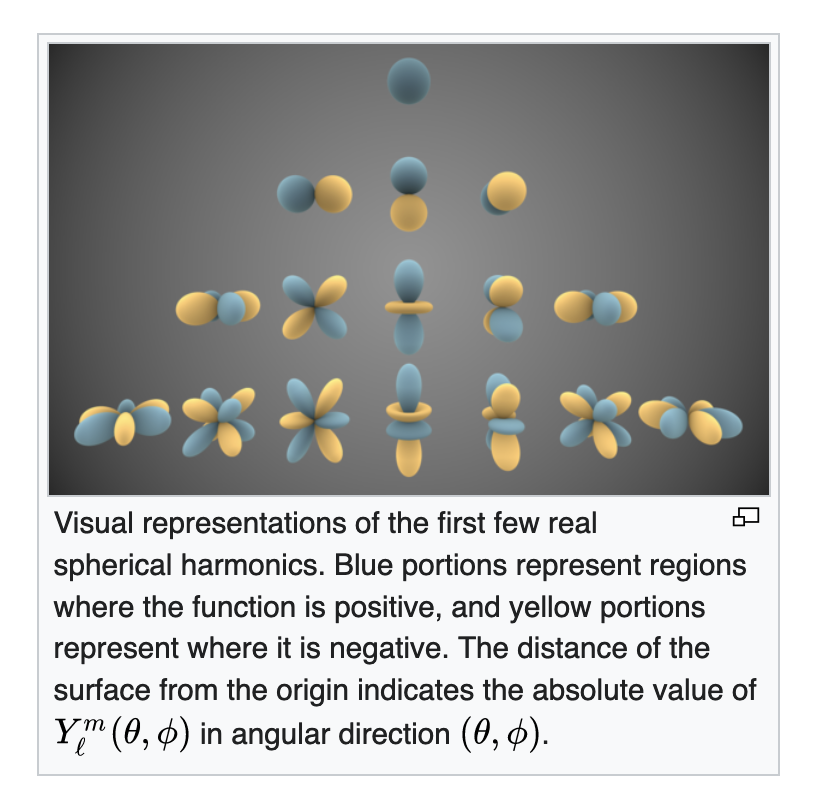Recursos estructura del átomo / modelos atómicos
Filtrando por etiquetas adicionales, se pueden separar tipo de material (material autosuficiente, actividades. …)
Asociable a estructura del átomo se pueden ver también recursos sobre espectro y recursos sobre física de partículas: lo de física de partículas aplica porque a edades tempranas se introduce el átomo y sus constituyentes y el CERN hace recomendaciones para evitar ideas erróneas.
También se pueden ver recursos sobre escalas y notación científica
También asociado a recursos configuración electrónica y orbitales
También asociado a recursos enlaces
“Creo que es la hipótesis atómica (o el hecho atómico, o como quieran llamarlo) que todas las cosas están hechas de átomos: pequeñas partículas que se mueven en movimiento perpetuo, atrayéndose entre sí cuando están a poca distancia, pero repeliéndose cuando se les trata de apretar una contra la otra “ .¿Por qué?” En esa sola frase hay una enorme cantidad de información sobre el mundo, si solo se aplica un poco de imaginación y pensamiento “.
Concepto moderno del átomo. 3ºESO cidead - recursostic.educacion.es (isótopos y masa atómica)…cidead, cc-by-nc-sa
Estructura del átomo y enlaces químicos. 4ºESO cidead - recursostic.educacion.es cidead, cc-by-nc-sa
Cálculos de masas atómicas (masa ponderada). 3ºESO cidead - recursostic.educacion.es cidead, cc-by-nc-sa
1 La estructura electrónica de los átomos. Ernesto de Jesús Alcañiz - uah.es
Modelos atómicos
Modelos del Átomo del Hidrógeno - phet.colorado.edu En 2021 solo versión java, funciona con cheerpj
Un poco de humor
https://xkcd.com/2100/

El átomo y los modelos atómicos. 3º ESO cidead - recursostic.educacion.es
quimicafacil.net Los modelos atómicos fácilmente explicados

Atomic Structure Walk Around
Atomic Structure Walk Around (pdf, 13 páginas)
twitter memecrashes/status/1477364495215382531
twitter memecrashes/status/1696775229119341037
Beyond Bohr. Quantum Model of the Atom Beyond - perimeterinsitutue.ca

Construcción de átomos
Incluye iones en algunos casos
 Usa niveles e indica exclusión Pauli
Simulación construcción, indica elemento/ion/estabilidad, no cita Pauli pero coloca en niveles, máximo 10 protones
Usa niveles e indica exclusión Pauli
Simulación construcción, indica elemento/ion/estabilidad, no cita Pauli pero coloca en niveles, máximo 10 protones
Constructor de átomos - educaplus.org
Partículas de los átomos e iones - educaplus.org
cnice.mec.es Iniciación interactiva a la materia, construir átomo
Constructor de isótopos, masa atómica
Modelo de Rutherford
Simulación del experimento de Rutherford, muy visual
http://www.deciencias.net/simulaciones/quimica/atomo/rutherford.htm
Rutherford. El modelo de átomo planetario - fisquiweb.es
Simulación que permite rebotes y desvíos (flash)
Simulación experimento Rutherford y comparación con Thomson

Simulación de la experiencia de Rutherford - sc.ehu.es Nivel universitario
Rutherford Atomic Virtual Lab. Open Source Physics Singapore - play.google.com
Dispersión de Rutherford - www.walter-fendt.de
Rutherford Nuclear Model Wasn’t Inspired by the Gold Foil Experiment

On a diffuse reflection of the α-particles. H. Gegier and Ernest Marsden. Published:31 July 1909
The scattering of α-particles by matter. Hans Geiger. Published:14 April 1910
LXI. The laws of deflexion of a particles through large angles. Dr. H. Geiger. & E. Marsden
Se puede asociar a colisiones y física de partículas
2. Colisiones: el método experimental. 2.1 CÓMO AVERIGUAR LA FORMA DE UN OBJETO INVISIBLE. LANZANDO PROYECTILES CONTRA ÉL: COLISIONES ELÁSTICAS
Rutherford Scattering - FlinnScientific

Modelo atómico de Bohr
Chapter 4: Niels Bohr and the Quantum Atom - faqs.org
Modelo atómico de Bohr - educaplus.org
Teoría de Bohr del Átomo de Hidrógeno - walter-fendt.de
Modelo atómico cuántico - actual
Modelo atómico mecanocuántico - educ.ar
En el video se explica cómo, a partir de las propuestas de Luis de Broglie, Werner Heisenberg y Erwin Schrödinger, se creó el modelo atómico actual, también conocido como modelo orbital o modelo cuántico-ondulatorio.
Vídeos sobre escala del átomo
Jon Bergmann: Just how small is an atom? (5 min) - ted.com
Visualización del átomo
Enlaza con orbitales y física de partículas
twitter martinmbauer/status/1532258418802708480
This is the first series of “photographs” of a hydrogen atom. But how do you take “photos” at (sub)atomic scales ? 1/13
The motivation for this thread is this visualisation of a proton I posted last week that received several disappointed comments that it is not made from real pictures or a simulation 2/13
But lets first look at atoms. A hydrogen atom is a proton and an electron. The proton is in the center, the electron is…we don’t know. Before we measure it we can only say something about the probability where to find it, but not where exactly. That’s Quantum Mechanics 3/13
To look at the electron in a hydrogen atom means to hit it with a photon. If the wavelength of the photon is too long it does not resolve the electron. If it is short enough to do so, it kicks the electron out of the hydrogen atom 5/13
So you can only “look at” each atom once. But you can use a cloud of hydrogen atoms and keep kicking the electron out of different atoms many many times. It will not be at the same exact place, but always somewhere in the predicted region because QM is right! 6/13
This is exactly how the pictures in the first tweet were produced. Electrons are knocked out of a beam of hydrogen atoms with a laser and then recorded on a screen very much like a picture tube in an old TV. 7/13
Now for the proton. Even though a proton is made from quarks and gluons you can never ever knock them out of a proton. This is the strong force after all, not the electromagnetic force holding together hydrogen atoms 8/13
Also the proton is 10.000 times smaller than the hydrogen atom, no laser is powerful enough to resolve its substructure. You need a collider. 9/13
Now we can hit different protons with very energetic photons (or other particles, electrons, other protons…) and measure the outcome of this scattering process. For example the angle by which electrons scatter off the proton. For pp collisions there is debris 10/13
Based on many measurements of many collisions and depending on the momentum transfer in these collisions the proton does not look like a billiard ball, but is better described as made from 3 quarks (high x), or a cloud of quarks and gluons (low x). 11/13
In contrast to the hydrogen atom we can’t solve the equations of QCD exactly. But we can describe what the proton looks like at different momentum transfers. One of the pioneers working on these equations is the latest Nobel prize laureate Giorgio Parisi (the P in DGLAP) 12/13
Data from decades of measurements of proton scattering processes has been interpreted to produce the images physicists and artists @JLab_News and @ArtsatMIT have made. Here is a great video explaining in more detail how the animations were produced 13/13
The first images of the hydrogen atom were produced by Aneta Stodolna and her team. 14/13
Hydrogen Atoms under Magnification: Direct Observation of the Nodal Structure of Stark States - aps.org

Partículas constituyentes del átomo
Ver también en física de partículas
Electrón
Quarks, hadrones
twitter MolaSaber/status/928005553397358593

Ejercicios
monografias.com Estructura atómica y tabla periódica
elsaposabio.com Protones, neutrones y electrones. Isótopos. Iones 02
Categoría: ESTRUCTURA ATÓMICA http://www.elsaposabio.com/quimica/?cat=25
twitter quirogafyq/status/1088754518563659777
Gamificando las clases de #Física y #Química de 2º de ESO. Hoy tocó configuración electrónica, sobra decir que fué un éxito. Esto de los dados es un vicio. Gracias a @ProfaDeQuimica y a @bjmahillo por las ideas. Como mola este claustro virtual. #gamificacion #gamification.


Los ficheros se vevían inicialmente anexados a esta página, ahora se pueden ver en
drive.fiquipedia quimica/recursos-estructura-del-atomo







